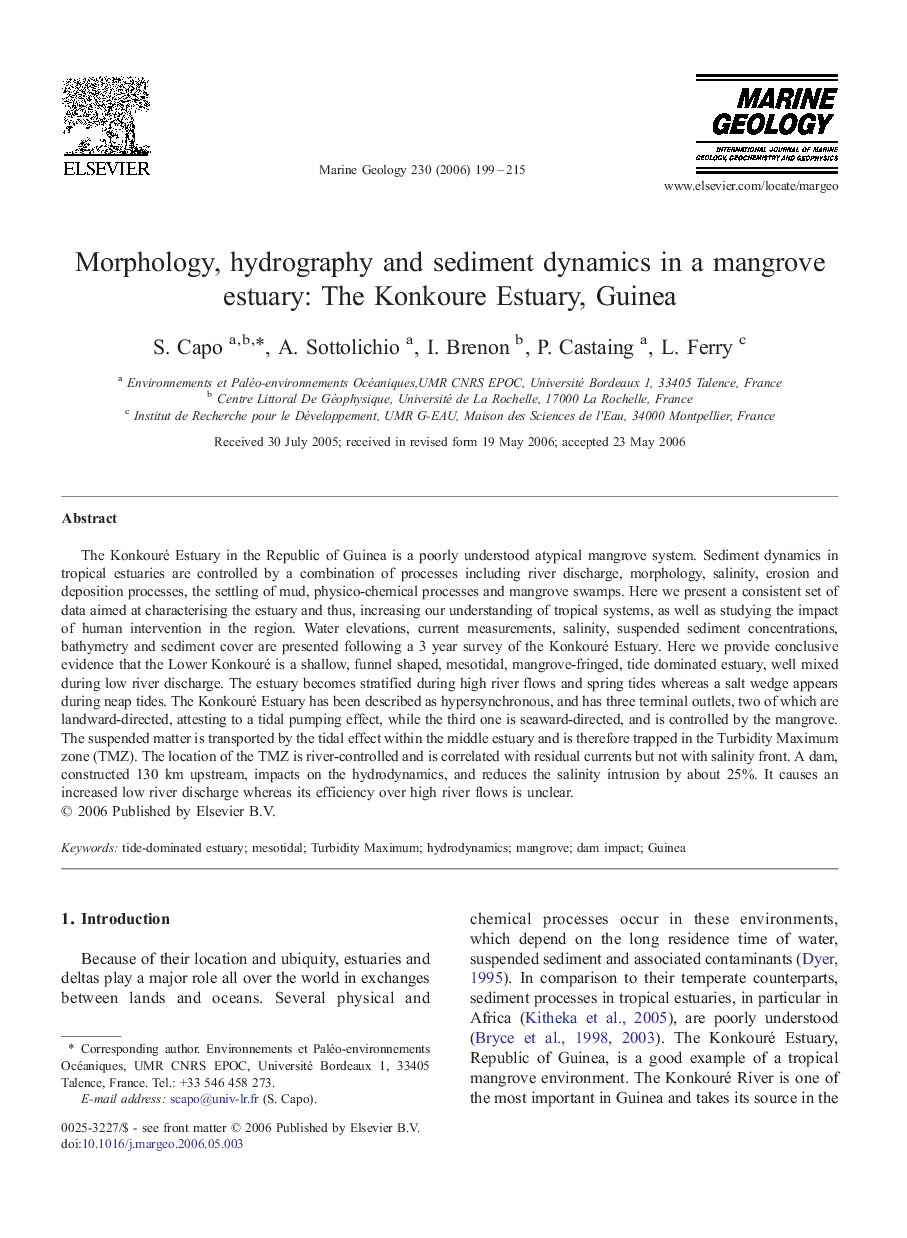| Article ID | Journal | Published Year | Pages | File Type |
|---|---|---|---|---|
| 4719736 | Marine Geology | 2006 | 17 Pages |
The Konkouré Estuary in the Republic of Guinea is a poorly understood atypical mangrove system. Sediment dynamics in tropical estuaries are controlled by a combination of processes including river discharge, morphology, salinity, erosion and deposition processes, the settling of mud, physico-chemical processes and mangrove swamps. Here we present a consistent set of data aimed at characterising the estuary and thus, increasing our understanding of tropical systems, as well as studying the impact of human intervention in the region. Water elevations, current measurements, salinity, suspended sediment concentrations, bathymetry and sediment cover are presented following a 3 year survey of the Konkouré Estuary. Here we provide conclusive evidence that the Lower Konkouré is a shallow, funnel shaped, mesotidal, mangrove-fringed, tide dominated estuary, well mixed during low river discharge. The estuary becomes stratified during high river flows and spring tides whereas a salt wedge appears during neap tides. The Konkouré Estuary has been described as hypersynchronous, and has three terminal outlets, two of which are landward-directed, attesting to a tidal pumping effect, while the third one is seaward-directed, and is controlled by the mangrove. The suspended matter is transported by the tidal effect within the middle estuary and is therefore trapped in the Turbidity Maximum zone (TMZ). The location of the TMZ is river-controlled and is correlated with residual currents but not with salinity front. A dam, constructed 130 km upstream, impacts on the hydrodynamics, and reduces the salinity intrusion by about 25%. It causes an increased low river discharge whereas its efficiency over high river flows is unclear.
